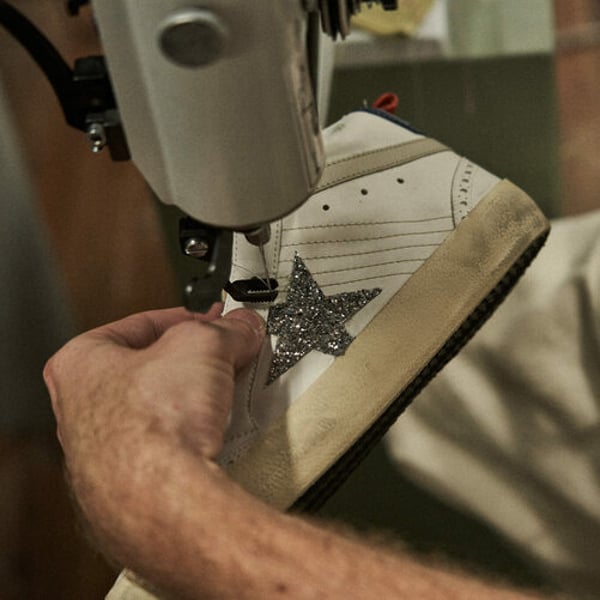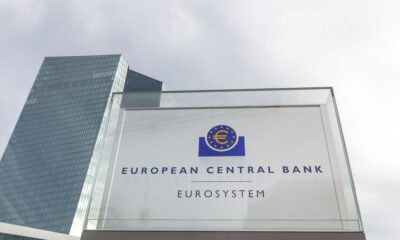Fashion
Indian textile industry hails GST reforms, urges review of ₹2,500 slab
Sanjay K Jain, chairman of ICC’s National Textiles Committee, highlighted the broader implications: “The long-standing demand for removal of the inverted duty structure in MMF yarn and fabric has been met—bringing the entire chain under 5 per cent GST, in line with cotton. However, garments priced above ₹2,500 will become around 6 per cent costlier. The use of manmade textiles is expected to rise as a result.”
India’s textile and retail sector has welcomed the GST rationalisation, with industry bodies lauding removal of inverted duty and alignment of MMF with cotton at 5 per cent.
CMAI, RAI and NITMA hailed the move as transformative, though concerns remain over garments and footwear above ₹2,500 being placed in the 18 per cent slab.
Stakeholders urged the Council to adopt a uniform 5 per cent rate.
The Clothing Manufacturers Association of India (CMAI) said the changes address two major demands—removal of inverted duty and equalisation of cotton and MMF chains at 5 per cent. “The increase of the 5 per cent limit from ₹1,000 to ₹2,500 is also an extremely positive move,” CMAI said, while urging the Council to reconsider taxing garments above this level at 18 per cent. “Garments above the price of ₹2,500 are also consumed in large numbers by the common man and middle class, especially woollen clothing, occasion wear, Indian traditional clothing and handlooms,” it added.
Suditi Industries Ltd, owner of kidswear brand Gini & Jony, said the revisions provide dual growth drivers—stronger consumption and improved margins. Commenting on the company’s expansion, Harsh Agarwal, CEO of Gini & Jony, said: “This is a pivotal time for Suditi. With the integration of Gini & Jony, we are no longer just a textile manufacturer—we are transforming into a consumer-facing retail powerhouse. The upcoming GST reforms and strengthening domestic consumption create a strong runway for growth.”
The Retailers Association of India (RAI) termed the move to a two-slab framework “a vital step towards simpler and fairer taxation” but warned against flaws in price-based thresholds. RAI said: “Such slabs create distortions, promote grey market activity, harm organised retail and discourage domestic manufacturing. All garments and footwear should ideally be taxed at 5 per cent, or at the very least, a more reasonable price threshold should be established.”
For the Northern India Textile Mills Association (NITMA), the decision marks a “transformative milestone” for India’s MMF sector. NITMA president, Sidharth Khanna, said: “We are pleased to share that the long-standing issue of the inverted duty structure in GST for MMF textiles has been successfully addressed. These changes will significantly lower costs across the MMF and technical textiles value chain, enhancing efficiency and export competitiveness.”
Raghunath Mannil Balakrishnan, chief executive officer at Mafatlal Industries Limited, opined, “The 56th GST Council reforms bring both opportunities and challenges for the textile and apparel sector. While the increase of GST on coal from 5 per cent to 18 per cent will push up fabric processing costs, the reduction of GST on yarn from 12 per cent to 5 per cent should partially balance this out. As a result, fabric prices overall may not see a significant change. What is particularly encouraging is the reduction of GST on garments priced below ₹2,500 from 12 per cent to 5 per cent. This is a consumer-friendly move that will make mid-market apparel more affordable, stimulate demand, and strengthen growth in this critical segment. For an industry that is both price-sensitive and volume-driven, such measures can provide the much-needed impetus for growth. At Mafatlal, we see this as a positive step that can support industry volumes while ensuring affordability for a wider base of consumers.”
The Southern India Mills’ Association (SIMA) also hailed the GST rationalisation as a long-pending demand fulfilled, calling it a breakthrough for the MMF textile value chain. Dr. S K Sundararaman, chairman, SIMA, said: “This bold and historic reform slots the entire MMF chain at 5 per cent, addressing raw material structural issues that had made the poor man’s clothing more expensive.”
He noted that global MMF accounts for 70 per cent of fibre consumption but only 30 per cent in India, largely due to earlier tax distortions. He added: “The government has set a vision to grow textiles from $172 billion to $350 billion and exports from $37 billion to $100 billion. Polyester will be the main growth engine to achieve this vision.”
Dr. Sundararaman also appreciated the establishment of fibre neutrality and the introduction of 90 per cent provisional refunds for raw material duties, saying these measures would “boost domestic consumption by 7–10 per cent in the near term and help India withstand abnormal tariffs imposed by the US.”
The Indian textile industry has collectively thanked the government for addressing long-standing demands, while pressing for further rationalisation to ensure all garments and footwear are taxed at a uniform rate.
Fibre2Fashion News Desk (KD)
Fashion
China’s HSG buys controlling stake in Golden Goose

Published
December 19, 2025
Chinese Global investment firm HSG has acquired a controlling stake in Italian sneaker label Golden Goose, in one of the biggest Chinese investments in a European luxury brand.
Temasek, a global investment company, and a fund managed by its wholly-owned asset manager, True Light Capital, will acquire a minority stake. US investment fund Permira will remain committed as a strategic minority shareholder, continuing its successful partnership with Golden Goose, according to a press release from the Venice-based sneaker brand.
The deal ends months of speculation that Golden Goose was about to be sold to a Chinese investor.
Financial terms of the transaction were not disclosed. The transaction is subject to customary closing conditions and regulatory approvals and is currently expected to close within the summer of 2026. Golden Goose S.p.A. expects its €480.0 million Senior Secured Floating Rate Notes due 2031 to be redeemed in full.
Golden Goose has been the fastest growing Italian fashion label in the past half-decade, stunning observers with its exceptional performance. Since 2020, the group has delivered consistent, strong, and profitable growth, with revenues increasing from €266 million in FY 2020 to €655 million in FY 2024. During this period, the group has accelerated its direct-to-consumer (DTC) channels, launched its Forward Store concept, diversified its product assortment, and invested significantly in ‘Co-Creation’ experiences, deepening connections with its customers worldwide.

This investment comes amid a period of strong financial performance for Golden Goose. In the nine months ending September 2025, the group reported double-digit growth across regions. Revenues rose 13% year-on- year, driven by 21% growth in its DTC channel and an expanded store network, which reached 227 directly operated stores, up from 97 in 2019.
The investment is underpinned by a strong strategic and cultural fit with Golden Goose’s growth ambitions. Drawing on the new investors’ combined experience and track records investing in international luxury and consumer technology brands, such as Moncler and Ermenegildo Zegna group by Temasek, and ByteDance, Pop Mart, RedNote, and Marshall by HSG, they will support Golden Goose’s international ambitions as a leading next-generation luxury brand, while preserving and continuing to invest in Golden Goose’s Made in Italy roots.
Silvio Campara, Golden Goose’s hard charging CEO, will continue to lead the group as chief executive officer, alongside the existing leadership team. Marco Bizzarri, currently a non- executive director on the Golden Goose board, will become non-executive chairman. He brings significant industry expertise, shaped by his leadership of globally renowned luxury brands including Gucci, Bottega Veneta, and Kering, and will play an important role in accelerating Golden Goose’s next phase of global expansion.

“We are delighted to welcome HSG and Temasek as strategic partners to Golden Goose as we step up our global ambitions as a leading international luxury brand. Their investment is yet another vote of confidence in the success of our model at the intersection of luxury, lifestyle, and sportswear, beloved by a growing, global community of dreamers. With their experience of scaling international leaders across luxury and the broader business spectrum, HSG and Temasek will help us unlock the vast opportunity ahead for Golden Goose. We are grateful to Permira for being integral partners to our successful journey so far and are delighted they will remain valued partners alongside HSG and Temasek,” said Campara.
“Golden Goose stands for love, empathy, authenticity and a powerful sense of community in today’s luxury landscape,” added Jiajia Zou, Partner at HSG. “We feel deeply privileged to partner with Temasek and Permira, together with Silvio and his talented team to support the brand as it enters its next exciting chapter of growth- especially internationally- while preserving and celebrating what makes Golden Goose so uniquely Italian. We look forward to contributing our global experience, resources, and deep respect for the brand’s heritage, with the shared ambition of bringing the unique joy and spirit of Golden Goose to consumers around the world, for generations to come.”
In addition, Francesco Pascalizi and Tara Alhadeff, partners at Permira, commented: “Golden Goose has led the way in defining what it is to be a next-gen luxury brand for two decades now. They have built a unique community of GG-lovers around the world whilst also building a robust and high performing business. Against a challenging backdrop for the luxury industry in 2024 and 2025, Silvio and his talented team have continued to deliver strong performance and healthy growth, proving that Golden Goose is a brand that can stand the test of time.”
Copyright © 2025 FashionNetwork.com All rights reserved.
Fashion
Nigeria’s textile imports up 47.43% YoY in Jan-Sept 2025

The country imported textile and textile materials worth N 228.83 billion in the first quarter (Q1) this year, N 337.12 billion in Q2 and N 248.32 billion in Q3.
Industry experts blame policy failure, weak execution of credit initiatives, abandonment of promised institutional reforms, pervasive corruption and structural bottlenecks like weak cotton farming, insecurity and the inability to scale locally-produced polyester for the decline, according to Nigerian media reports.
Nigeria’s textile imports rose to N 814.27 billion in January-September 2025—a 47.43-per cent YoY rise despite repeated government claims of the sector’s revival.
Rising imports indicate a weak domestic textile industry.
Industry experts blame policy failure, weak execution of credit initiatives, abandonment of promised institutional reforms, pervasive corruption and structural bottlenecks for the fall.
Hamma Kwajaffa, director general of the Nigerian Textile Manufacturers Association, lamented that the 10-per cent tax on imported textiles—which was introduced when the ban on textile imports was lifted so that the amount collected can be ploughed into domestic textile production—has not been directed to improve the private textile sector.
Kwajaffa pointed to the failure to create a dedicated textile development fund domiciled with the Bank of Industry.
Conflicting positions among top officials had stalled any action related to the sector and repeated workshops and announcements without execution had yielded no tangible outcome, Kwajaffa added.
Fibre2Fashion News Desk (DS)
Fashion
Confident Meadowhall enjoys a year of strength

Published
December 19, 2025
There’s been quite a few end-of-year updates from shopping centres and all of them are upbeat after a busy 2025.
Sheffield’s Meadowhall is one of them, noting it has been a strong year of exchanges on new leases covering 300,000 sq ft of the destination, 80% retail and 20% hospitality, including renewals from 19 tenants.
It said visitor numbers “have also remained consistently high”, headlined by its busiest Black Friday weekend in six years (262,981 visitors across the three days), while October’s school half-term was also the strongest in six years (457,000 visitors representing a 9.7% year-on-year increase).
Meanwhile, commercial brand activations continued to “perform effectively” throughout 2025, including standout initiatives from Trinny London and Jo Malone.
And, of course, new openings and expansions are the lifeblood of any centre with Meadowhall announcing fast-expanding novelty retailer Miniso has just joined its roster while fashion lifestyle brand TK Maxx has extended its presence there, “concluding a strong year of leasing activity and retail performance”.
TK Maxx has added an adjacent unit to create a 19,000 sq ft space, complete with a 173-ft fully-glazed frontage on the Upper Level The Gallery, showcasing its mix of branded fashion, beauty, homeware, and accessories.
Miniso, meanwhile, has opened a 1,759 sq ft store on Lower Level High Street, introducing its range of lifestyle, homeware, and technology products, alongside the brand’s character collections.
These additions follow several major openings in 2025, including beauty majors Sephora and Superdrug.
These introductions round off a period in which several tenants have invested significantly in upgrading and expanding their stores. More than £47 million has been spent by brands alone across 2024 and 2025, with more than a third of Meadowhall’s operators undertaking new fitouts and refurbishments in that time.
Looking ahead to 2026, operator British Land said more than 25 brands have already committed, and will be bringing a further £8 million of investment to the centre.
Louisa Holmes, Asset Director at operator British Land, said: “This year’s level of investment, from new arrivals and long-standing tenants, reflects the confidence brands have in Meadowhall as a critical part of their national portfolio. In addition to that, the centre’s success means our brands are effectively competing to bring the best and latest shop fits and concepts here, elevating the experience for our visitors.”
Copyright © 2025 FashionNetwork.com All rights reserved.
-

 Business6 days ago
Business6 days agoHitting The ‘High Notes’ In Ties: Nepal Set To Lift Ban On Indian Bills Above ₹100
-

 Politics1 week ago
Politics1 week agoTrump launches gold card programme for expedited visas with a $1m price tag
-

 Sports1 week ago
Sports1 week agoU.S. House passes bill to combat stadium drones
-

 Sports1 week ago
Sports1 week agoPolice detain Michigan head football coach Sherrone Moore after firing, salacious details emerge: report
-

 Fashion1 week ago
Fashion1 week agoTommy Hilfiger appoints Sergio Pérez as global menswear ambassador
-

 Fashion1 week ago
Fashion1 week agoBrunello Cucinelli lifts 2025 revenue growth forecast to up to 12%
-

 Business5 days ago
Business5 days agoKSE-100 index gains 876 points amid cut in policy rate | The Express Tribune
-

 Tech6 days ago
Tech6 days agoFor the First Time, AI Analyzes Language as Well as a Human Expert

















